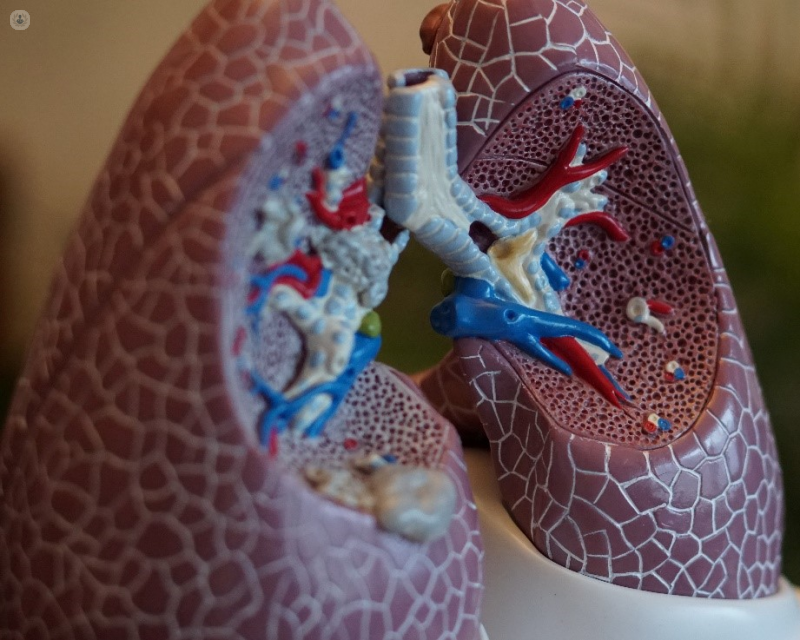FAQs on Bronchiectasis
Autore:Bronchiectasis is a long-term condition that is associated with inflammation of the bronchi and a build-up of mucus which can negatively impact quality of life.

We recently spoke with the highly established specialist in pulmonology and respiratory medicine, Dr Grace Robinson, to discuss this condition, what its other symptoms are, what the most common causes are, how it can be managed and what the prognosis is. Read on to find out.
Who is most affected by bronchiectasis?
It’s quite an uncommon condition, approximately 5 in every 1,000 adults in the UK have bronchiectasis. Symptoms usually develop in middle age, though it can impact people at any age.
What are the symptoms of bronchiectasis?
Bronchiectasis causes daily cough and sputum production. The volume of sputum produced varies and can sometimes be associated with coughing up blood. Sometimes this is associated with breathlessness or weight loss, if the symptoms are more severe.
The main symptoms of bronchiectasis include:
- a chronic cough
- coughing up blood
- abnormal sounds or wheezing in the chest with breathing
- chest pain
- shortness of breath
- coughing up large amounts of thick mucus every day
- fatigue
- weight loss
What are the most common causes of bronchiectasis?
Bronchiectasis can be caused by lots of different underlying conditions. In the vast majority of individuals, we do not find a reason for it, but the commonest cause is previous infection such as a bad chest infection or pneumonia in childhood, measles or whooping cough.
It can be associated with longstanding asthma, inflammatory bowel disease and rheumatoid arthritis and there are some genetic causes such as cystic fibrosis and some types of immune deficiency.
Is it a dangerous condition?
Bronchiectasis is rarely dangerous, unless it is very severe. In the vast majority of people, it causes cough with daily sputum production. Sometimes for exacerbations (flare-ups) it may require courses of antibiotics and sometimes these need to be fairly prolonged for approximately 2-3 weeks. Physiotherapy to learn specialist airway clearance techniques is also required.
How are flare-ups managed?
An exacerbation (or flare up) of bronchiectasis is usually due to infection and is characterised by a worsening cough, increased sputum volume (which may be stickier and discoloured), often with chest pain or a fever.
A sputum sample should be sent off for analysis, and the home emergency supply of antibiotics should be started. An increased frequency of chest physiotherapy may be required.
Sometimes hospital admission for intravenous antibiotics, nebulisers and other treatments is required.
What is the life expectancy of someone who has bronchiectasis?
Most people with bronchiectasis will have a normal life expectancy. They may be troubled by a few infections a year. For the vast majority of people, these are mild and manageable at home. However, the severity of this condition is variable.
If you have some of the symptoms discussed in this article, you may like to get in touch with an expert for assistance. We recommend contacting the highly experienced pulmonologist, Dr Grace Robinson , via her profile for further advice. Click here to visit her profile today.


